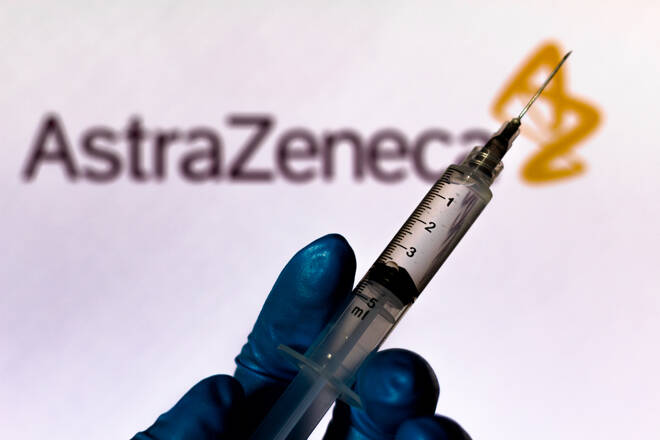Advertisement
Advertisement
COVID-19 Vaccine Update – The EU’s Vaccine Woes Worsen and Is Unlikely to Improve Anytime Soon
By:
Amidst low vaccination rates across the bloc, the Euro area receives more bad news on the vaccine front. Containment measures are unlikely to ease soon.
EU Vaccine News
As the EMA readies to review the AstraZeneca vaccine on 29th January, there was some bad news for EU member states.
AstraZeneca has issued a warning to EU member states to expect limited supply of the vaccine near-term.
The EU has ordered up to 400 million doses of the AstraZeneca vaccine, with up to 100 million due within the 1st quarter.
Last week, the FT reported that AstraZeneca may only deliver less than half of the 100 million doses. That means that less than 25 million would receive full protection by the early part of the 2nd quarter.
It was also reported that there was deep satisfaction within the EU Commission even though the vaccine had yet to be approved.
With the EU having made significantly smaller Pfizer Inc. and Moderna Inc. vaccine orders, the shortfall will raise further concerns over the Eurozone economy and its recovery.
Less than 50 million doses would barely make a dent in inoculating the more than 440 million population.
The bad news followed Pfizer Inc’s cut back in supply to the EU earlier in the month.
Vaccination rates across the EU remain woefully short. The latest news will continue to leave vaccination rates on the lower side that will add further pressure on governments to contain the virus by other means.
Vaccinations Rates
According to the Bloomberg Vaccination Tracker, the EU’s vaccination rate stood at 1.79 doses per 100 people as at 22nd January.
This continued to fall well short of the UK, the U.S and leading nations in the Middle East.
As at 22nd January, Israel had the highest vaccination rate of 37.14 doses per 100 people.
The U.A.E came in a distant second, with a vaccination rate of 21.76 doses per 100.
Bahrain ranked 3rd, with a rate of 9.71 (19th January), with the UK coming in 4th with a rate of 8.76 doses per 100.
With Joe Biden’s drive to vaccinate 100 million in 100 days, the U.S vaccination rate climbed to 6.04 as at 22nd January.
Looking across the EU, France was amongst the worst performers, with a vaccination rate of just 1.49.
Germany also trailed the front runners in the EU, with a rate of 1.81 doses per 100 people.
Spain and Italy had performed somewhat better, with rates of 2.51 and 2.17 respectively.
When considering the fact that these 4 member states are the worst affected, the numbers should have been better.
A lack of supply and currently low rates are a bad combination for the EU. This raises the prospects of even more restrictions to hurt the region’s economy.
For a full breakdown of vaccination rates by country, please visit Bloomberg Vaccination Tracker page here.
The Latest COVID-19 Numbers
At the time of writing, there were a total of 98,750,103 confirmed COVID-19 cases and 2,116,438 related deaths.
By geography, the U.S had reported 25,390,042 cases and 424,177 COVID-19 related deaths.
India reported 10,640,544 cases, with Brazil reporting 8,755,133 cases.
Sitting behind Russia (3,677,3520) remained the UK (3,583,907).
France (3,011,257), Italy (2,411,854), Spain (2,603,472), and Germany (2,125,261) reported a combined 10,151,844 cases.
Looking Ahead
The reported AstraZeneca supply constraints make Johnson & Johnson’s vaccine availability all the more important.
A single dose vaccine would certainly ease the strain on the EU that will now have to maintain containment measures for longer.
The EU will be able to order up to 400 million doses of the Johnson & Johnson vaccine. This would cover close to the entire EU population should a single dose vaccine receive approval.
For the EU, however, a lack of supply by AstraZeneca and Sanofi troubles mean that the entire population would not receive a vaccine for some time.
The EU had preordered 300 million doses from Sanofi, which won’t be ready until later this year at the earliest.
As the markets respond to supply issues, we can expect focus on vaccination rates, infection rates, supply to become greater near-term.
Johnson & Johnson Vaccine News
News hit the wires this week that late clinical trial results will be available within the coming weeks.
With the U.S FDA ready to review the vaccine, single dose vaccines could be available within the U.S this quarter.
The easier to transport vaccine means that governments would be able to ramp up vaccination rates. For governments lagging behind, the biggest advantage will be the fact that it is a single dose vaccine.
Approvals would need to be given, however, for distribution of the vaccine. A slow moving EMA could see the EU fall further behind its peers.
It’s worth noting that the EU had secured enough vaccine doses to cover 183.5% of the population.
While Johnson & Johnson may be able to ease the pain, it will be some time before vaccination rates hit appropriate levels.
About the Author
Bob Masonauthor
With over 28 years of experience in the financial industry, Bob has worked with various global rating agencies and multinational banks. Currently he is covering currencies, commodities, alternative asset classes and global equities, focusing mostly on European and Asian markets.
Advertisement
